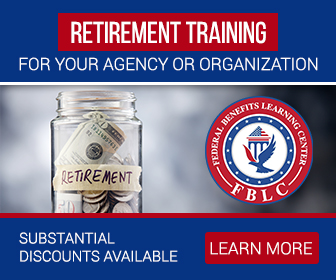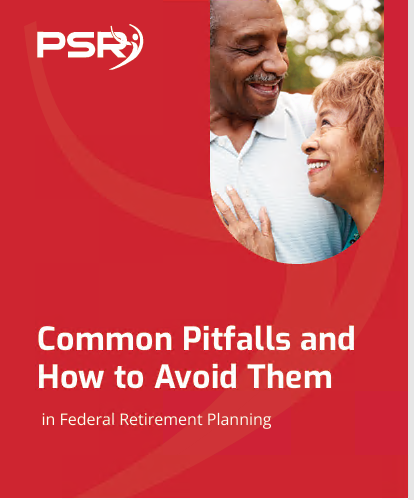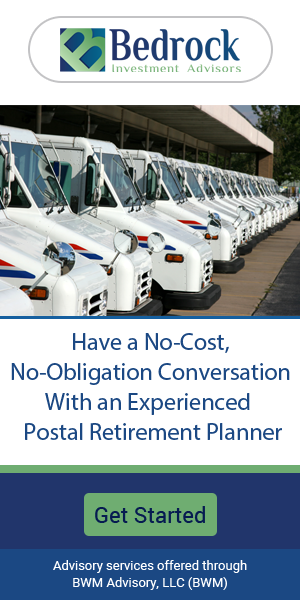Key Takeaways:
- Leveraging your federal employee benefits wisely can significantly impact your retirement lifestyle and financial stability.
- Understanding the unique aspects of federal benefits helps you plan for a more comfortable and secure retirement.
Maximize Your Federal Benefits for a Stronger Retirement
If you’re a federal employee, you’re already part of a system that offers some of the most comprehensive retirement benefits in the country. But with multiple options, plans, and timelines to consider, it’s easy to get lost in the details. Knowing how to leverage these benefits will ensure a smoother transition into retirement and a more comfortable life after you stop working.
- Also Read: What the Upcoming Postal Service Health Benefits Program Changes Mean for Your Retirement
- Also Read: You Could Be Overlooking Key Federal Employee Perks That Won’t Be Around Forever
- Also Read: FEGLI Premiums Are Rising as You Age—Here’s What Federal Employees Should Do About It
What Are the Main Federal Employee Benefits?
Federal employees enjoy several key benefits that form the foundation of their retirement planning. These include:
- The Federal Employees Retirement System (FERS): This is a three-part system including your pension, Social Security, and the Thrift Savings Plan (TSP).
- Health Insurance through the Federal Employees Health Benefits (FEHB): Coverage continues into retirement, allowing you to maintain essential healthcare.
- Life Insurance through the Federal Employees Group Life Insurance (FEGLI): A federal life insurance plan that can be carried into retirement, though some aspects may change.
- Long-Term Care Insurance through the Federal Long Term Care Insurance Program (FLTCIP): A valuable resource for potential future needs.
Understanding how each of these pieces fits into your retirement plan is the first step toward fully leveraging your benefits.
When Should You Start Thinking About Retirement?
It’s never too early to start planning. Ideally, you should begin considering your retirement strategy early in your career. However, most people begin to focus on it more seriously within five to 10 years of retirement. This period is often when you’ll make the most crucial decisions, like when to retire and how to best use your benefits to your advantage.
By planning ahead, you can fine-tune your strategy and make sure that you are taking full advantage of the benefits offered to you as a federal employee.
How to Optimize Your Thrift Savings Plan (TSP)
The Thrift Savings Plan (TSP) is one of the cornerstones of federal employee retirement planning. As a defined-contribution plan, similar to a 401(k), it’s important to contribute enough to maximize the government’s matching contributions. Currently, federal employees can contribute up to $22,500 per year (as of 2024), with catch-up contributions available for those over age 50.
You should also consider the balance between the traditional TSP and the Roth TSP. While contributions to the traditional TSP reduce your taxable income today, withdrawals in retirement are taxed. The Roth TSP allows you to pay taxes on contributions now, ensuring tax-free withdrawals later. By evaluating your current tax bracket and your expected tax rate in retirement, you can make strategic choices about how much to allocate to each option.
Understanding Your FERS Pension
One of the best aspects of being a federal employee is your access to a pension under the Federal Employees Retirement System (FERS). Your pension is based on your years of service and your highest average salary over three consecutive years, known as your “high-3.”
For most employees, the formula is:
- 1% of your high-3 salary x your years of service if you retire before age 62.
- 1.1% of your high-3 salary x your years of service if you retire after age 62 and have worked for at least 20 years.
Knowing how your pension is calculated will help you estimate your retirement income and make decisions about when to retire for the best financial outcome.
Don’t Forget About Social Security
Many federal employees will also receive Social Security benefits in retirement. This provides a third layer of financial security when combined with your FERS pension and TSP savings. But when should you begin claiming your benefits?
The age at which you start receiving Social Security can significantly affect your monthly payments. If you claim early at 62, you’ll receive reduced benefits. However, waiting until your full retirement age (typically 66 or 67, depending on your birth year) allows you to claim full benefits. Delaying benefits until age 70 can increase your monthly check even further.
How to Keep Your Health Insurance in Retirement
Maintaining health coverage is one of the most critical parts of a successful retirement. Luckily, federal employees can continue their FEHB coverage into retirement as long as they’ve been enrolled for at least five years before retiring. This is an incredibly valuable benefit, as most people rely on employer-sponsored healthcare until retirement.
You’ll continue paying your share of the premiums, and the government will keep paying its portion, just like when you were employed. This can be a huge cost-saver when compared to private healthcare plans.
Should You Carry Life Insurance Into Retirement?
Federal employees can also continue their FEGLI coverage into retirement, though the cost may increase as you age. However, as you approach retirement, it’s important to evaluate whether you still need the same amount of coverage.
For example, if your mortgage is paid off and your children are financially independent, your need for life insurance may be lower. If you do decide to maintain life insurance coverage, FEGLI remains a convenient option. Just be aware of the potential cost increases and coverage reductions as you age.
Protecting Your Future with Long-Term Care Insurance
Many retirees underestimate the potential costs of long-term care, but it’s one of the most significant financial risks in retirement. Federal employees have access to the Federal Long-Term Care Insurance Program (FLTCIP), which can help cover the costs of care should you need assistance with daily activities in the future.
While it’s impossible to predict exactly what care you may need, considering long-term care insurance in your retirement plan can prevent your retirement savings from being depleted by unexpected healthcare expenses.
Timing Your Retirement for Maximum Benefits
One of the most important decisions you’ll make as a federal employee is when to retire. This decision can have a major impact on your pension and other benefits.
For example, if you retire before age 62, your pension calculation uses the lower 1% multiplier instead of 1.1%. Additionally, by waiting until you reach your full retirement age, you may be able to avoid reductions in your pension and receive larger Social Security payments.
It’s important to consult with a benefits specialist or financial planner to help determine the optimal retirement date based on your situation.
Get Ready for a Comfortable Retirement
Your federal employee benefits offer an incredible foundation for a secure retirement, but it’s up to you to make the most of them. Whether it’s optimizing your TSP, understanding your pension, or deciding when to claim Social Security, a solid strategy will allow you to enjoy your retirement without financial worry.
By understanding and leveraging the benefits available to you, you can set yourself up for a comfortable retirement. Remember, retirement planning isn’t just about saving money—it’s about making informed decisions that will benefit you for decades to come.












